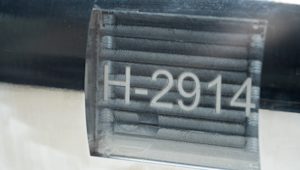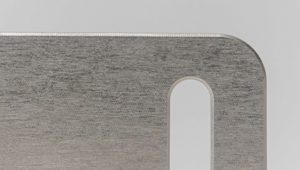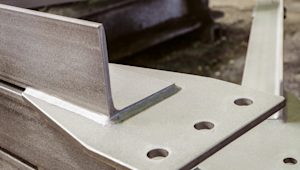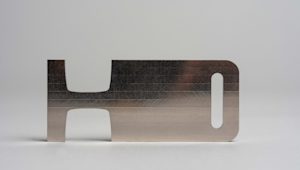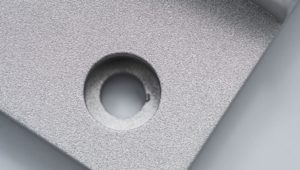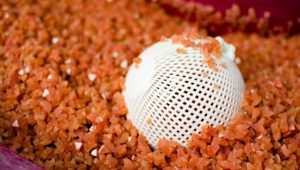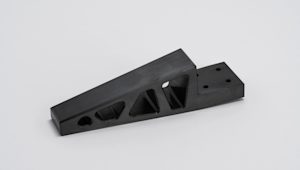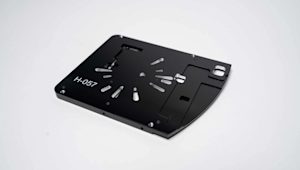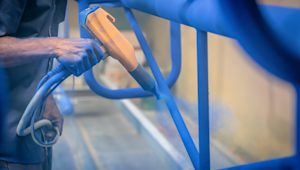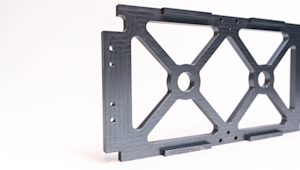Whether it’s to attract a consumer’s eye or enhance the look and feel of a factory floor, designing a part with aesthetics in mind goes a long way toward the overall end result. In this article, we’ll take a look at several common methods that can help you improve aesthetics, including surface finishes, attractive materials, tips for aesthetically pleasing design, and more.
What is a part’s aesthetics?
A part's aesthetics refers to its visual appeal and design characteristics. This includes aspects such as surface finish, color, texture, shape, and overall appearance.
Aesthetically pleasing designs can:
-
Enhance consumer appeal
-
Streamline assembly procedures
-
Simplify inspections
-
Improve safety protocols
-
Contribute to overall operational efficiency
As such, essentially every industry can benefit from aesthetically pleasing parts. Additionally, improving aesthetics can sometimes improve a part’s other properties, such as resistance to corrosion or heat, or overall durability.
How can you improve a part’s aesthetics?
You can improve a part’s aesthetics in a variety of ways, from selecting the right material to applying certain post-processing techniques. You can also design with a part’s aesthetics in mind before you actually manufacture it, considering factors such as ergonomics and contours.
What materials can improve a part’s aesthetics?
-
Stainless steel. Stainless steel is known for its lustrous appearance and corrosion resistance, making it a popular choice for enhancing aesthetics in various industries, including medical, automotive, and consumer goods.
-
Copper. With a distinctive reddish-brown color and the ability to develop a natural patina over time, copper parts can add character and a unique aesthetic appeal to a wide range of products, such as pipes, fittings, valves.
-
Aluminum. With a sleek appearance – plus lightweight properties and ease of manipulation – aluminum is a popular choice for automotive components, structural components in the construction industry, and aerospace-industry materials.
-
Carbon fiber. Known for its high strength-to-weight ratio, carbon fiber can offer a contemporary and high-tech aesthetic, making it a preferred choice for applications in aerospace, automotive, and sports equipment, where a balance of performance and visual appeal is essential.
-
Polymers. Polymers such as PC, PMMA, PET, and PP can be produced with smooth, glossy surfaces, contributing to aesthetic properties in various applications, including consumer electronics, automotive components, and household products. Meanwhile, polymers, such as PE, PVC, and PU, can be manufactured with textured surfaces, also providing enhanced grip and anti-slip properties for applications in industries such as construction, furniture, and consumer products.
What surface finishes improve a part’s aesthetics?
An appropriate surface finish can help achieve various aesthetic results in parts, such as reflectivity, texture, and color. Let’s take a look at a few of the most common surface finishes that are applied to parts
-
Polishing. A surface finishing process that involves abrasion to create a smooth, reflective, and lustrous appearance, enhancing a part's visual appeal and contributing to a high-end, elegant finish suitable for various applications in industries such as automotive, jewelry, and consumer electronics.
-
Anodizing. An electrochemical process that forms a protective oxide layer on some metal surfaces, offering increased corrosion resistance and the option to add colors – improving a part’s aesthetics and durability. Anodizing often finds applications in aerospace, architectural, and consumer goods industries.
-
Powder coating. A dry finishing process that involves applying electrostatically charged powder to a part's surface, which is then cured to form a durable, attractive, and uniform coating in various colors and textures. Powder coating is ideal for indoor and outdoor applications, and offers enhanced resistance to abrasion, corrosion, and chemicals.
-
Plating. A surface coating process in which a metal layer is deposited on a conductive surface, enhancing the part's appearance with decorative, lustrous, and visually appealing finishes. Additionally, plating usually provides protection against corrosion, and wear, and is often used for applications in the aerospace and automotive industry, as well as in jewelry and household appliances.
-
Brushing. Involves abrading the surface of the material with a fine abrasive material in a consistent pattern, creating a distinctive brushed texture. Brushing is commonly used with metals like stainless steel and aluminum to produce a unique aesthetic appeal. It can also help hide surface imperfections and scratches, making it a popular choice for various consumer products and architectural applications.
-
Etching. A process in which a chemical solution or acid is used to remove material from the surface of a part, creating intricate designs, patterns, or textures. It allows for the creation of visually appealing surface designs and textures that can enhance the overall appearance of a part, and is often employed in the manufacturing of decorative items, printed circuit boards, and precision components.
-
Dyeing. Adds vibrant and durable colors to textiles or plastic materials, enhancing the part's visual appeal and allowing for customization in industrial applications in sectors such as textile manufacturing, automotive interiors, and industrial fabrications.
Tips for designing aesthetically pleasing parts
A part’s aesthetics are not totally dependent on your choice of material and post-processing technique. By considering these factors as you design your part, you’ll be better positioned to achieve an aesthetically pleasing end result.
-
Color. Choose a color scheme that enhances visibility and safety for industrial equipment, considering high-visibility hues for improved warning signs and important labels, ensuring clear identification and minimizing workplace hazards. Here, using bright, conspicuous colors on heavy machinery components aids in quick identification and promotes workplace safety compliance, while adding to an industrial environment’s overall aesthetic.
-
Ergonomics. Incorporate ergonomic principles to ensure comfortable and efficient use. Consider factors such as grip, reach, and user interaction to enhance usability and user experience during manufacturing and assembly processes. For example, designing an ergonomic hand tool with a rubberized grip that is optimized for efficient assembly line production due to improved grip and comfort.
-
Contours. Use smooth, flowing contours to create visually appealing designs and improve the part's tactile experience, facilitating seamless manufacturing and assembly while reducing potential sharp edges and points. Think about a sleek and streamlined automotive exterior with aerodynamic contours, facilitating efficient stamping and assembly line production – ultimately reducing production time and improving aesthetics for the consumer.
-
Symmetry. Integrate balanced and symmetrical elements to achieve visual harmony and simplify manufacturing processes, aiding in tooling and reducing complexities during machining, molding, or casting. In dynamic applications, for example, you should place focus on the axial symmetry of rotating parts, to balance inertia forces.
-
Proportions. Maintain balanced proportions and dimensions to create visually pleasing parts while ensuring ease of fabrication and assembly, and minimizing material waste and machining complexities. For example, by producing standardized metal structural beams with precise proportions for construction projects, you can more easily ensure material efficiency and simplified on-site installation.
-
Texture. Implement appropriate textures to enhance visual appeal and tactile sensation, considering manufacturing capabilities and limitations to ensure consistency and ease of production without compromising the part's overall aesthetics – by applying a specialized powder coating to equipment meant for outdoor use, for example.
-
Feature integration. Simultaneously consider functional and aesthetic features, such as in an advanced industrial robot with seamlessly integrated sensors and user-friendly interfaces. Doing so streamlines production, enabling timely delivery of high-quality parts with a strong emphasis on visual appeal and functional efficiency.
Create aesthetically pleasing parts
Ensure functionality and high aesthetics by ordering custom parts with Hubs. Get an instant quote and free DFM feedback by uploading your CAD file.
You can learn more about manufacturing techniques, including tips for producing end-use parts and how to select the right material for your project on our Knowledge Base.
Frequently asked questions
How can you improve a part's aesthetics?
Consider surface finishes like polishing, anodizing, and powder coating, or materials such as stainless steel or certain polymers.
What role does texture play in aesthetics?
Texture can add visual interest and tactile sensation, improving the part's overall appeal and user experience.
How does symmetry contribute to aesthetics?
Symmetry creates visual harmony and simplifies manufacturing processes, resulting in a visually appealing and balanced part.
Why are proportions important in industrial design?
Balanced proportions ensure visually pleasing and aesthetically harmonious parts while minimizing material waste and machining complexities.
What are some common techniques for enhancing aesthetics?
Ergonomics, contours, and material selection are vital for improving the visual appeal and user experience of industrial parts.
How does color impact the aesthetics of a part? Color can evoke specific emotions and enhance the visual appeal of a part, making it more appealing to the target audience.
What are some cost-effective methods for improving aesthetics?
Utilize techniques like surface treatments, strategic part redesign, and material selection to achieve a visually appealing part within budget constraints.
How can surface finishes be optimized for aesthetics?
Choose finishes like plating and brushing to improve the visual appeal and durability of industrial parts.








